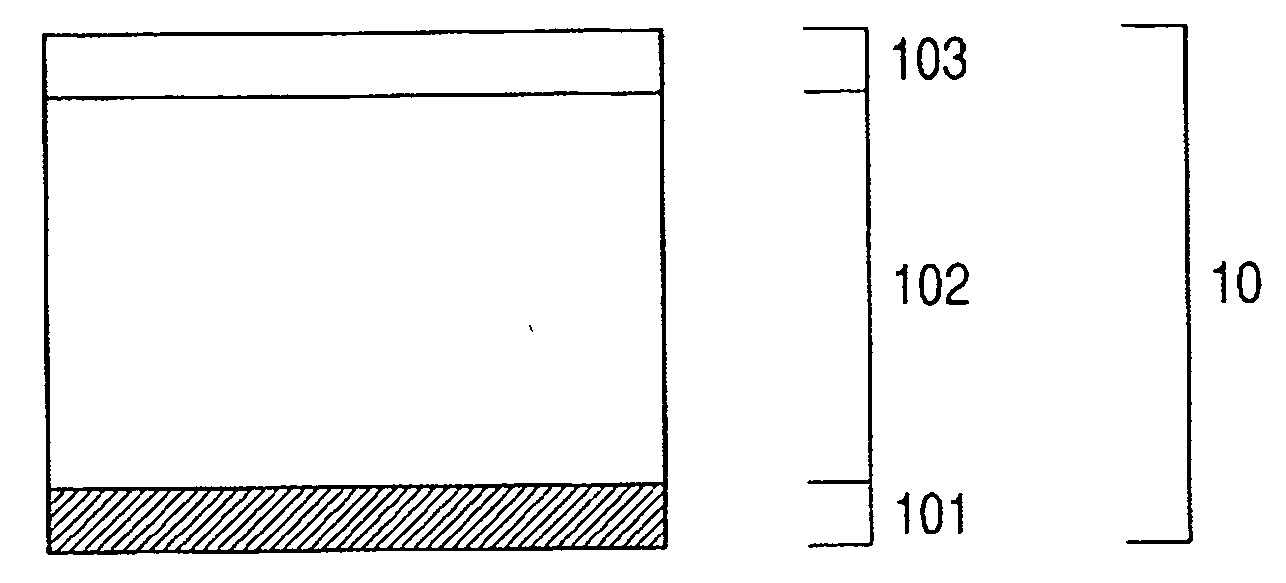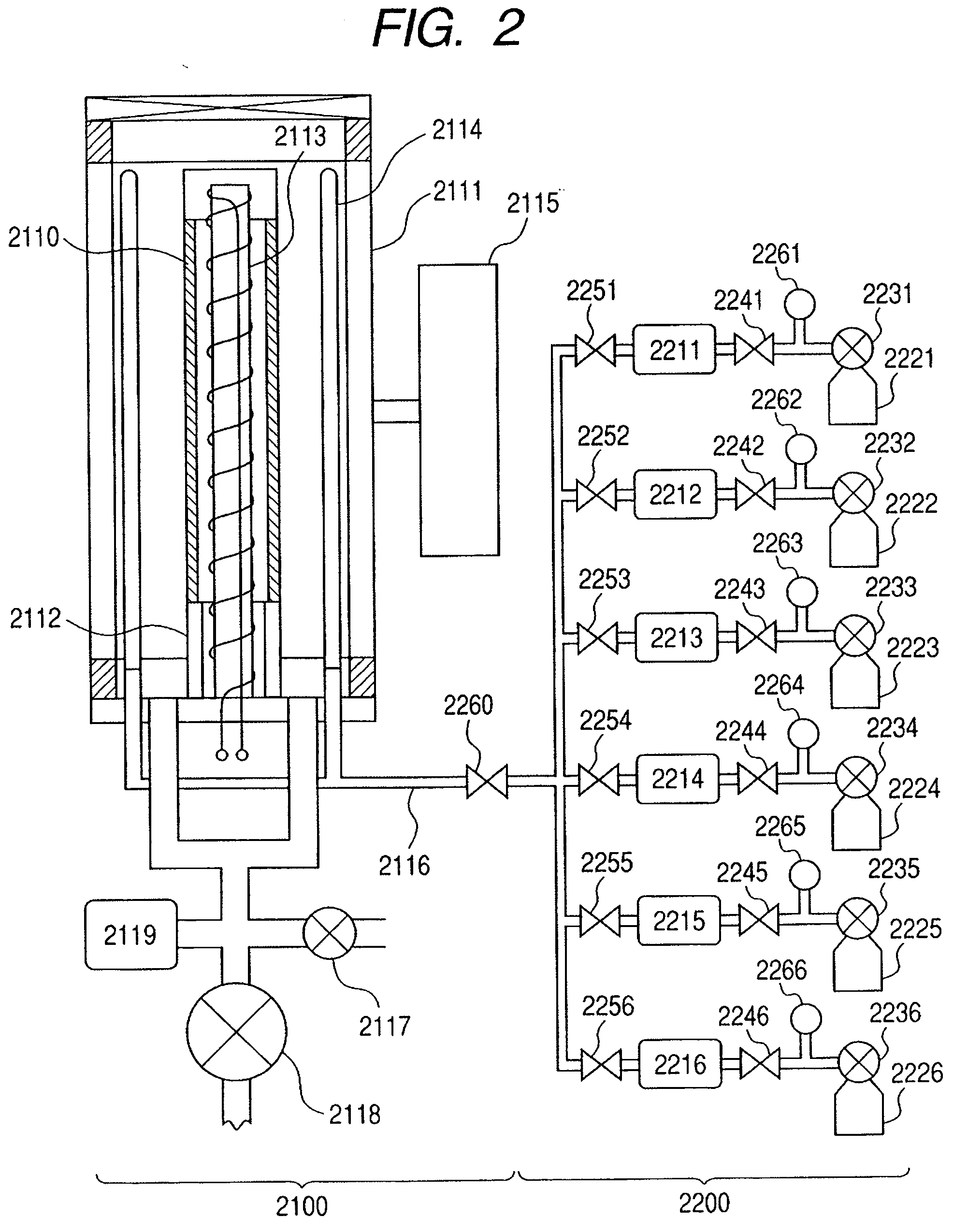Electrophotographic photosensitive member
a photosensitive member and electrophotography technology, applied in the direction of electrographic process apparatus, optics, instruments, etc., can solve the problems of low resistivity, image deletion phenomenon, and inability to easily occur phenomenon called image deletion, so as to maintain film hardness of surface layer, keep resistivity from increasing, and keep residual potential from increasing
- Summary
- Abstract
- Description
- Claims
- Application Information
AI Technical Summary
Benefits of technology
Problems solved by technology
Method used
Image
Examples
example 1
[0164] Using the plasma-assisted CVD system shown in FIG. 2, deposition films were successively formed and superimposed on mirror-finished aluminum cylinders (supports) of 84 mm in diameter under conditions shown in Table 1, to produce photosensitive members each including the lower-part charge injection blocking layer, photoconductive layer, upper-part charge injection blocking layer and surface layer shown in FIG. 1C. As to the lower-part charge injection blocking layer, the photoconductive layer, the upper-part charge injection blocking layer and the surface layer, films were all formed under the conditions shown in Table 1 as common conditions. In regard to the surface layer, SiH4 gas and N2 gas flow rates and electric power were changed as shown in Table 2 for each photosensitive member, to change the mixing ratio of SiH4 gas to N2 gas and the electric power per SiH4 gas quantity. As to other conditions, films were formed under the conditions shown in Table 1, to produce Photos...
example 2
[0170] Photosensitive Member G including the lower-part charge injection blocking layer, photoconductive layer, upper-part charge injection blocking layer and surface layer as shown in FIG. 1C was produced in the same manner as in Example 1 except that the conditions shown in Table 3 were applied. As shown in Table 3, when the surface layer was formed, CH4 gas and CO2 gas were fed so as to bring oxygen atom concentration and carbon atom concentration to appropriate values.
example 3
[0176] Five kinds of photosensitive members each including the lower-part charge injection blocking layer, photoconductive layer, upper-part charge injection blocking layer and surface layer shown in FIG. 1C were produced in the same manner as in Example 1 except that such conditions as shown in Table 5 were applied. The lower-part charge injection blocking layer, the photoconductive layer and the upper-part charge injection blocking layer were formed under the fixed conditions shown in Table 5, and the surface layer was formed changing the NO gas flow rate for each photosensitive member as shown in Table 6 and applying the conditions shown in Table 5, thereby producing Photosensitive Members J to N having different concentrations of oxygen atoms in the surface layers.
PUM
 Login to View More
Login to View More Abstract
Description
Claims
Application Information
 Login to View More
Login to View More - R&D
- Intellectual Property
- Life Sciences
- Materials
- Tech Scout
- Unparalleled Data Quality
- Higher Quality Content
- 60% Fewer Hallucinations
Browse by: Latest US Patents, China's latest patents, Technical Efficacy Thesaurus, Application Domain, Technology Topic, Popular Technical Reports.
© 2025 PatSnap. All rights reserved.Legal|Privacy policy|Modern Slavery Act Transparency Statement|Sitemap|About US| Contact US: help@patsnap.com



